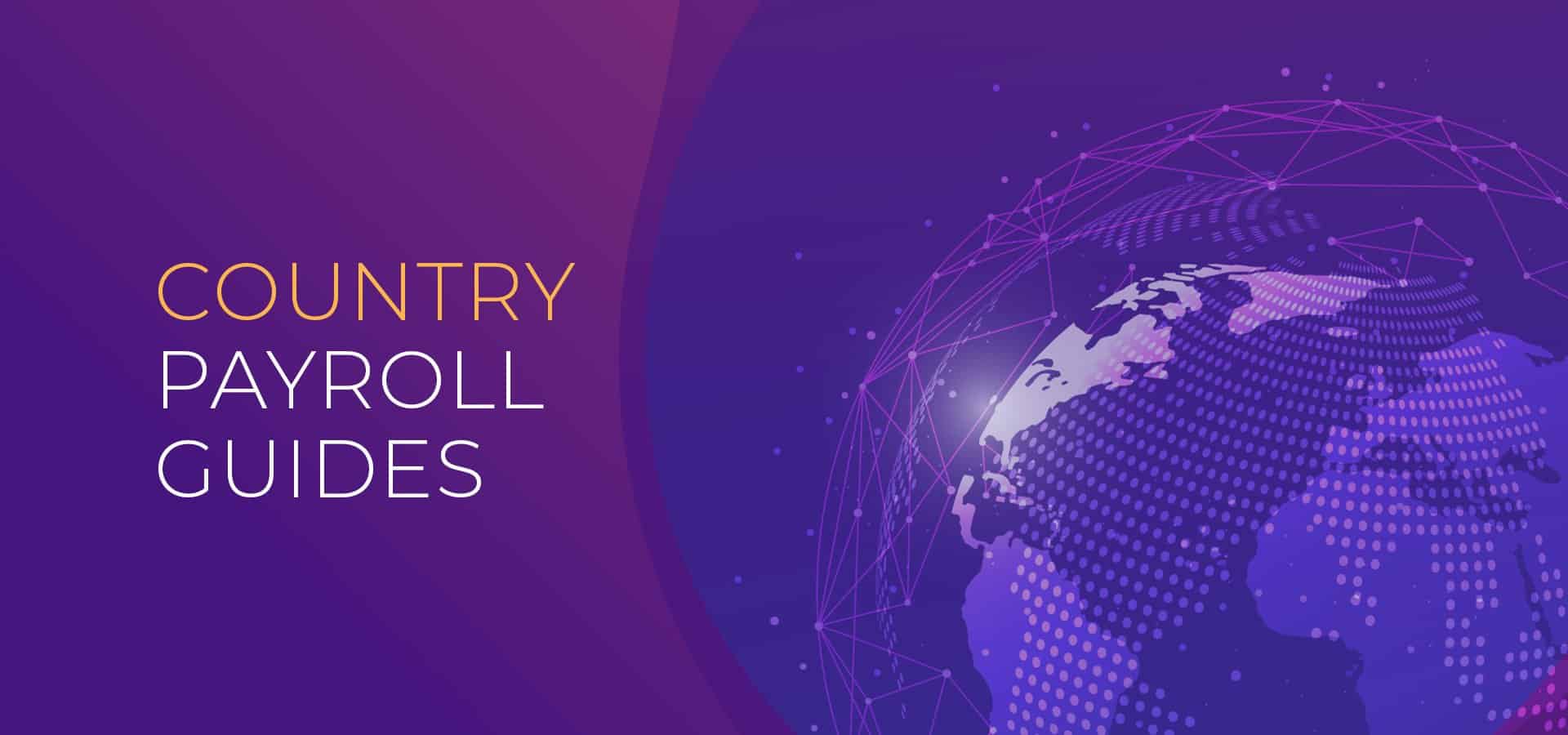The saying goes that there is no such thing as a free lunch, but in many countries the provision of a meal voucher or free food at the workplace is a well established benefit on which many employees rely. The origin of these schemes varies among countries, but many of them have become an integral part of workforce compensation and international payroll.
In Europe, many programs have their roots in the difficult times immediately after the end of the Second World War, when the provision of at least one hot meal a day to bolster the workforce (and, by extension, their productivity) was a major government concern. By contrast, in Mexico, the Law of Alimentary Assistance for Workers (Ley de Ayuda Alimentaria para los Trabajadores, LAAT) was adopted to promote and regulate the implementation of food aid schemes with the purpose of protecting worker health, improving their nutritional status, and preventing diseases linked to poor nutrition.
Although operational rules inevitably vary from country to country, the general principles are remarkably similar. Although in theory employers could issue their own vouchers, an entire industry has developed in recent years to facilitate the production of meal vouchers and redemption programs, relieving companies of the need to engage directly with retailers and manage reimbursement. There are a number of big players in the global voucher market, including Sodexho and Edenred, but a company could also use a local provider who only operates in that country, such as Erzsebet Utalvany in Hungary.
Typical steps in the process of issuing meal vouchers are as follows:
- Verify the number of working days where the employee has attended work (not including paid absences, such as vacations)
- Deduct any employee contribution toward the cost of the voucher from their pay
- Deliver pay and attendance data to the voucher provider
- The voucher provider will then issue the vouchers, which could be done with a simple paper document handed out in the workplace or via a more sophisticated electronic system that uses a chip-and-pin card
- Report the issued vouchers to tax and social security authorities via payroll reports
This could add up to a significant administrative task for the employer, so why would a company make the effort? The answer lies in the tax concessions available. By providing vouchers, either as a regular part of the reward package or on a salary-sacrifice basis (whereby employees give up a portion of cash salary in exchange for a voucher), the taxable base for the employee on the payroll calculation will fall, resulting in the employee enjoying more net income than could be achieved simply by paying the same amount of cash. The employer will gain too, as the voucher is often exempt from employer social insurance charges.
European Examples
France
To review some long-standing, successful meal voucher programs, let’s begin in the gastronomic capital of the world: France. This is a nation that takes lunch very seriously, so it should be no surprise that the issue of meal vouchers is a widespread benefit at all levels of the French workforce. The French voucher system allows employers to provide between 50% and 60% of a meal voucher free of tax and social insurance, with the maximum contribution by the employer set at €5.43 per day. So for example, if the employer contributes 50% of the cost of a voucher at the maximum allowed, the issued voucher will be worth €10.86. The additional €5.43 will come from the employee, being deducted from their pay for each day a voucher is provided. Meal vouchers may be issued for each day an employee attends work and are available to employees who work from home as well. The vouchers are currently issued in paper format and typically distributed at the workplace, and it is often the payroll team who are tasked with managing the process, given their role in deducting the contributions.
Meal vouchers can be spent at a wide range of restaurants and shops, or can be used for general supermarket shopping, provided the employee is purchasing food. There is a notional limit for a retailer to accept a maximum of €19 per day from an individual, and no cash change is allowed if an individual is paying exclusively with vouchers. So what a great deal for employees: in a twenty-day working month, if they have €108.60 deducted from their pay, they receive €217.20 back in a format that they can easily spend on life’s essentials. It’s a genuine way to double their money and a win for the employer as well. If the employer had paid the €108.60 as cash pay, they would have been liable for an additional €38 in social security contribution.
Although it’s important to note that providing meal vouchers is not required by law in France, it may be a requirement under certain collective bargaining agreements and is certainly a widespread employer practice. There are over 180,000 establishments in France that accept the vouchers, and about 3.5 million French employees have them as part of their reward package, from the most junior checkout assistant to senior managers.
Belgium
Next door in Belgium, the meal voucher scheme is equally sophisticated. The employer may provide up to €6.91, and the employee must provide at least €1.09, making the standard voucher worth €8 per day. The employee’s contribution is collected by payroll deduction. One voucher is issued for each working day that the employee has been present at work, and therefore adjustments to payroll need to be made each month to reflect absences. The employer’s portion is free of tax and social security contributions, but the provision of the voucher must be reported via the regular statutory reports. Vouchers have a maximum validity of one year and should only be used by the individual named on them for the purchase of food (although smaller retail establishments are notorious for accepting them for a range of purchases, including mobile phone credit).
With the voucher companies estimating that over 70,000 employers issue around €2 billion worth of vouchers to approximately 2 million staff every year, the meal voucher scheme is very much part of Belgian life. In 2016 all voucher companies switched to an electronic system that provided employees with chip-and-pin cards. The employer would calculate the value of vouchers for each employee, deduct the employee’s portion via payroll, transfer a data file and the necessary money to the provider, and then the provider would automatically load the voucher credit to each employee’s card. This scheme did experience some teething problems (funds not being available on a card when the employee went to pay for goods), and whilst these have largely been resolved, payroll offices may still anticipate queries regarding prompt voucher issue.
The Belgians love voucher schemes and have two other offerings your company may come across. The Eco-Cheque scheme allows an employer to provide vouchers worth up to €250 per year completely free of tax and social security, with no employee contribution required. The Sport and Culture Pass scheme allows a further €100 of vouchers to be used on a wide range of sporting and cultural activities – ranging from a visit to the zoo to paying for a regular swim. Again no employee contribution is required, and the provision of these vouchers may be mandatory under the terms of some collective bargaining agreements.
Hungary
When it comes to voucher scheme options, Hungary has Belgium beat. The Hungarian scheme is run by one organisation, Erzsebet Utalvany, and is much more ambitious than the simple provision of meal vouchers. The scheme allows for vouchers to be provided under five broad headings: Food, Small Gifts (e.g., the Jolly Joker), School Expenses (uniform costs, school supplies, etc.), Culture and Sports, and Clothing. The provision of the vouchers is free of tax and social security for the employee, but not all vouchers issued are tax-exempt to the employer. Each of the above categories will have elements that can be treated in one of three ways:
- The benefit is tax exempt
- The employer pays a tax charge of 34% of the value of the benefit
- The employer pays a tax charge of 40.71% of the value of the benefit
The decision to provide voucher benefits and the type available is down to the employer. Many companies will set a budget for employees and allow them to choose how to spread that budget over the various categories. The vouchers are usually provided at the employer’s full cost, with no contribution from the employee, and the employer provides a regular monthly report of participants that is often generated from payroll records. With over 60,000 participating employers and around 1.5 million employees receiving vouchers, the benefit is viewed as an essential part of the reward package for any business that aspires to be an employer of choice in Hungary.
Global Goals
Extending well beyond Europe, many meal voucher schemes aim to encourage healthy choices or provide much needed income supplements for hard-working families. India operates a scheme that allows employers to provide each employee with a voucher worth up to INR 50 per meal, free of tax and social security charges. With many employees working daily hours that allow two meals to be taken, this benefit could be worth around INR 2,000 per month. The main Indian voucher providers have recently moved to electronic systems, partly to counteract widespread misuse of the old system, whereby the vouchers would be used to pay for clothing or other consumer goods. The scheme should be used only to purchase food and non-alcoholic beverages at registered food outlets and restaurants, and the electronic system makes it much easier for the voucher providers to keep track of usage.
As already discussed, the Mexican system is focused primarily on achieving healthy eating outcomes. The law requires the food and non-alcoholic beverages provided for to meet good diet and hygiene standards. The employer may either provide food at a work canteen, via the premises of a third party, or by the provision of meal vouchers. Vouchers may be issued in either paper or electronic format and must be used within 60 days of issue – with no cash change and usage on other commodities strictly prohibited. The employer may contribute up to 10% of the employee’s base salary (not additional elements of pay such as bonuses) in food vouchers; however this budget is then divided by the number of working days in the month. One voucher may be issued for each working day, so attendance at work must be monitored and passed to the voucher issuer. The employee pays no tax or social security contributions on the value of the voucher, and the employer applies for a 53% tax credit (so the voucher costs the employer just 47% of face value). While it is not mandatory for all employers to provide food or vouchers, if the scheme is offered, it must be given to the whole workforce.
Scheme Setup
It’s important to note that voucher schemes are open to abuse, particularly for payroll teams responsible for calculating contributions and making statutory filings. In 2017 the Greek press reported that the Labour Inspectorate was discovering a wide-scale abuse of the local system. Greece allows employers to provide up to €6 per day, but the Inspectors found that more than 200,000 workers nationally had received up to 25% of their salary in tax-free meal vouchers. Controlling your voucher scheme and complying by the rules – particularly sticking to any tax-free thresholds and matching issued vouchers to actual days at work – and being able to prove that this has been done is essential. Payroll records are often the basis for such compliance checks.
So there can be such a thing as free lunch, and it can be a major motivational tool for employers. In some countries, it may be an expected part of the salary package, and companies setting up operations in a country for the first time would do well to research the requirements and expectations around meal vouchers. While it might seem to be an exclusively HR issue, it’s common for global payroll teams to end up doing a significant part of the administration, so make sure you know what will be involved if your organization is to adopt a scheme.



